We had never visited the old village of Robion until the autumn of 2023.
Like many visitors, tourists, and even locals, we had often driven through Robion for years, unaware of the charming little village tucked away from the main road between Cavaillon and Apt.
It was only when I saw a large poster in a supermarket in the Luberon that I learned about the existence of the old village.
That’s when I decided I absolutely had to explore it for myself and make a short film of my stroll through its ancient streets.
The village is relatively small but incredibly charming, with its old stone houses and narrow cobblestone streets.

Rue du Four © French Moments
Robion is a hidden gem in Provence, rich in history and Provençal charm.
Join me as I take you on a guided tour of this delightful place, sharing its stories and uncovering the beauty of this quaint village.
Watch this short video on the Luberon!
Plan your trip
- 🛏 Find the best accommodations in the Luberon on Booking.com
- 🚙 Rent a car in Aix-en-Provence or Marseille-Provence Airport
- 🙋♀️ Get the PASS CÔTE D'AZUR and take your pick from more than 100 amazing experiences!
- 🤩 Visit the beautiful Provençal region of Luberon
- 🚐 Join a 6-hour tour of Lourmarin, Bonnieux, Roussillon, and Gordes by air-conditioned minibus
- 🚘 Discover Provence in a 2CV. Stroll along exceptional roads and enjoy a piece of Luberon all to yourself!
- 🥗 Experience a black truffle hunting tour in a Luberon plantation
- 📚 Read the DK Eyewitness Provence and the Côte d’Azur Travel Guide
- 🗺️ Download the map of the village.
- 🚗 The main car park is at the Place de l'Église, next to the church and 'La Pompe'.
Robion: A Bit of History
Let’s step back in time as we recall the storied past of Robion.
The Beginnings
The origin of the village's name is unknown.
In the past, locals thought that the name Robion came from the Latin word robur, meaning "oak."
Other theories suggest that the name Robion could also derive from the root "rup" from the Latin "rupes," meaning steep rock.
This could be explained by the village’s location at the foot of the steep cliffs of the Petit-Luberon.
In any case, the earliest mention of the name dates back to 1233, referring to a place on the road to Robione.

Rue du Four © French Moments
Robion in the Middle Ages
The site of the current village has been occupied since the early Middle Ages.
It was the castrum of Robione, of which remnants of the ramparts can still be seen today.
A castle was built at the highest point of the village.
Robion initially belonged to the Count of Provence, who was a vassal of the Holy Roman Empire, and later to the Count of Toulouse.
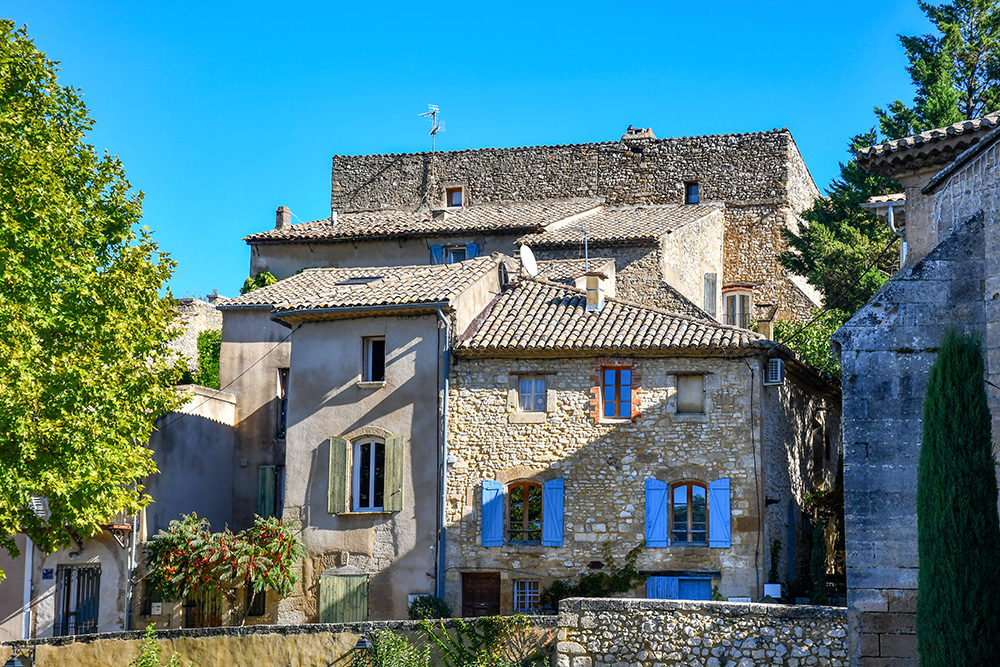
Robion © French Moments
On April 27, 1274, the Comtat Venaissin, including Robion, became a papal territory.
Robion was administered by the Bishop of Cavaillon and the Representative Assembly of the Comtat Venaissin, which sat in Carpentras, its capital.
Robion and the Comtat Venaissin became part of France on September 14, 1791, during the Revolution.

Robion © French Moments
Contemporary Robion
Robion is a village that has come a long way.
Imagine that it was still in ruins in the 1950s.
As with the nearby village of Oppède, this was due to the abandonment of the village at the end of the 19th century and beginning of the 20th century.
Since then, the ruins have been cleared, and the houses rebuilt.
The cobbled streets were restored in 1992.
Today, the commune of Robion has around 4,700 inhabitants and 50 shops, most of which are located along the Avenue Aristide Briand, away from the old village.
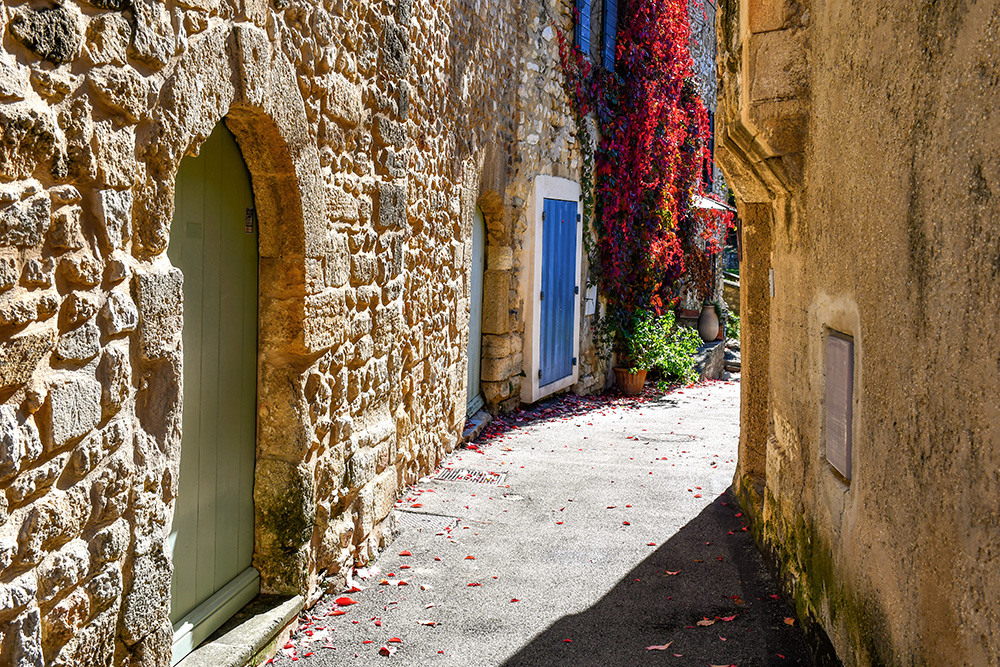
Rue du Four © French Moments
The Discovery Guide of Robion
Here's some tourist information to help you explore the Provencal village.
🎦 Check out my guided walk on YouTube to explore Robion with me:
Understanding the Village
Robion is located 6 km from Cavaillon and 30 km from Avignon.
The famous Provençal poet and author Frédéric Mistral once said that Robion was the key to the Luberon.
To discover the old village of Robion, you need to leave the Avenue Aristide Briand, the main road that runs through the new parts of the commune.
The old village evokes the Provençal charm of villages of yesteryear with steep and winding cobblestone streets.
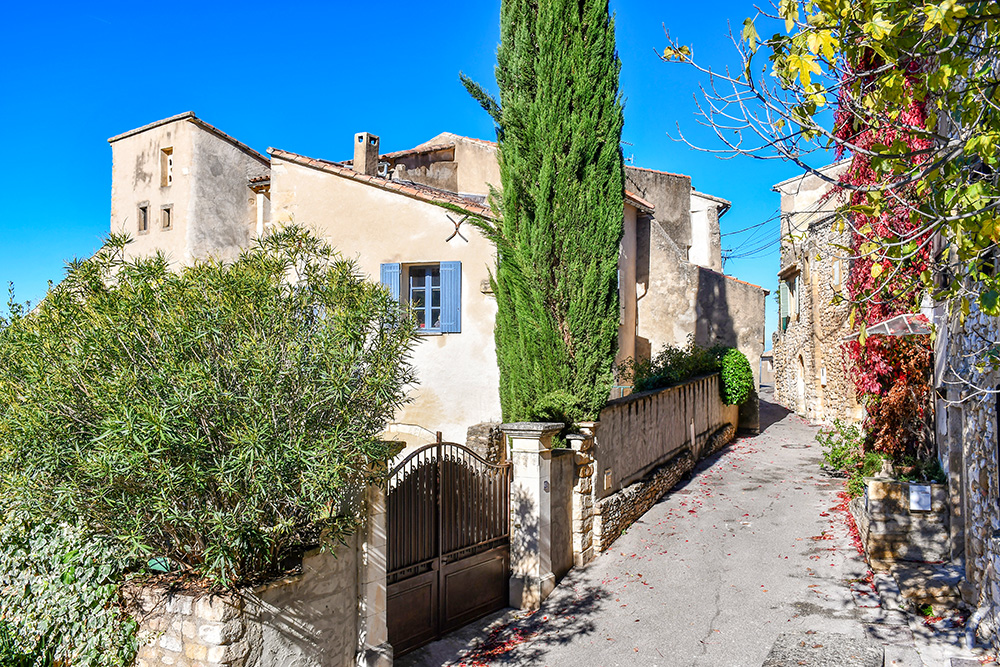
Rue du Four © French Moments
Moreover, while strolling through the streets of the old village, you will see many elements of small heritage.
Look up to discover Renaissance-style mullioned windows, pretty doors, and carriage doors, some of which have sculpted arch keys.
During your visit, you will notice plaques indicating houses with historical significance.
For example, you will discover the former house of the bailiff in 1789, the old village oven, and more.
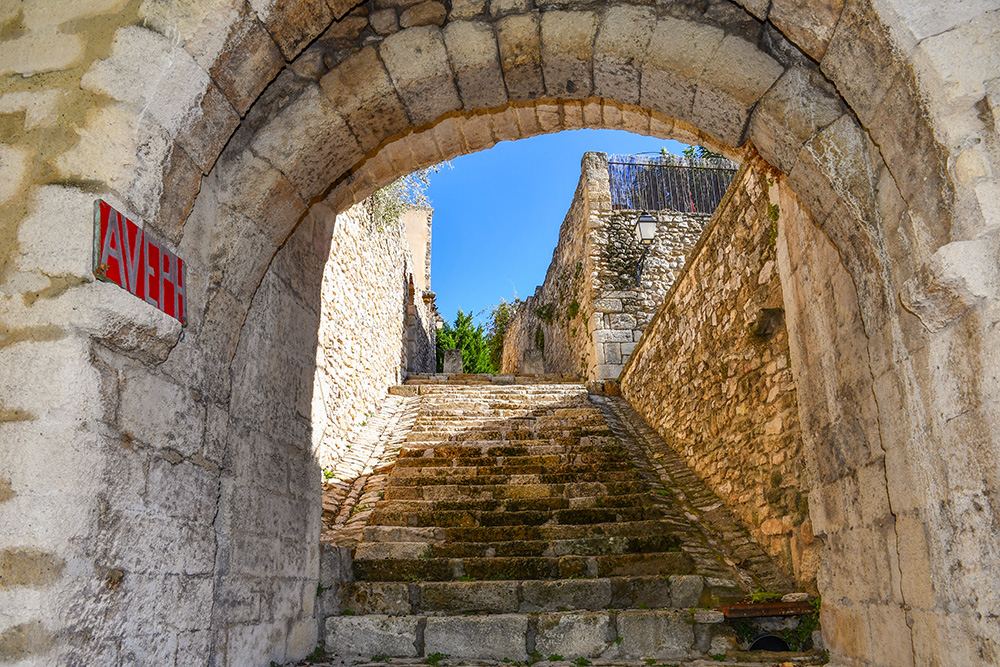
Robion: the Portalet © French Moments
The Village Walk of Robion
Let's begin our exploration of Robion from the Place de l’Église where there are lots of spaces to park your car.
Place Clément Gros and 'La Pompe'
The Place de l'Église is located at the entrance to the historic village, right next to the church.
In front of you is the adjacent Place Clément Gros.
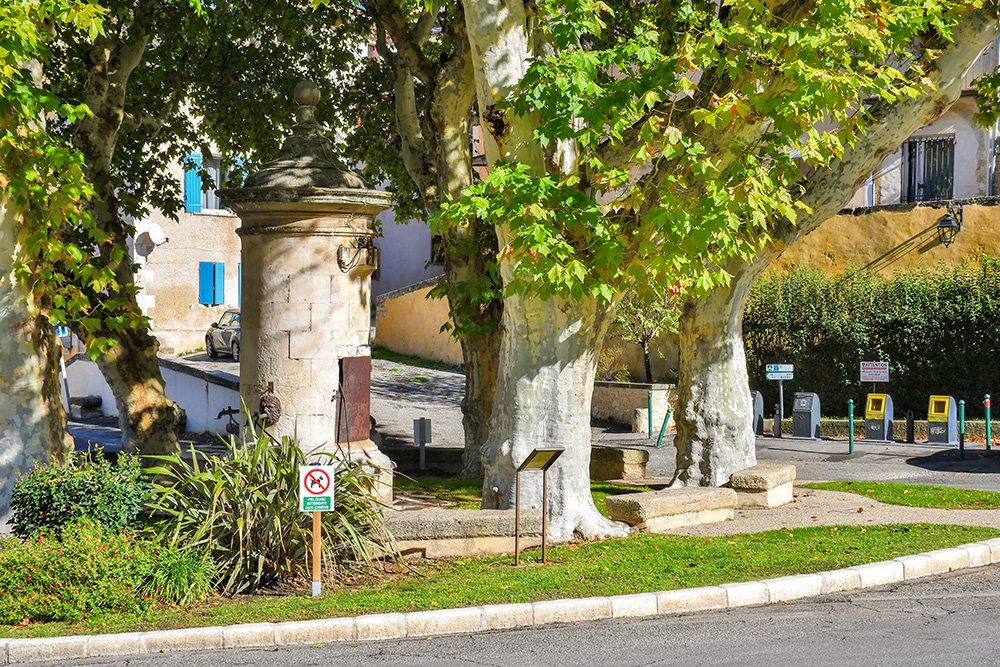
Place Clément Gros © French Moments
This roundabout is the heart of the village as all the streets converge towards it and its crown of six large centennial plane trees.
In the centre, there is an old public well that has been transformed into a fountain.
The Escanson spring has long served to supply the village with drinking water.
The stream originates from a rock fissure on the mountainside overlooking the village.
The captured water was used to supply this fountain, which the villagers nicknamed "La Pompe".
It somewhat resembles a Morris column like those found in Paris.
The square also gives access to the Robion town hall and the war memorial.

Robion Town Hall © French Moments

The war memorial © French Moments
Rue du Four
The old village is slightly uphill and you can start the visit with the Rue du Four.
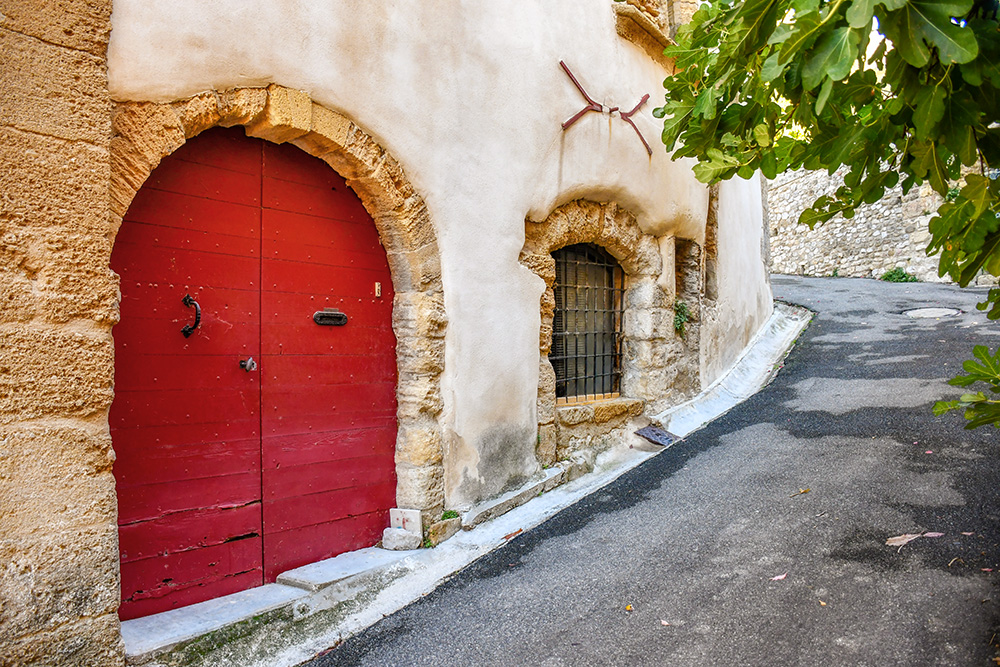
Rue du Four © French Moments
The Clock Tower
The street leads to the Place de l'Horloge.
You can see one side of the clock tower.
Go down a bit to admire its front view.
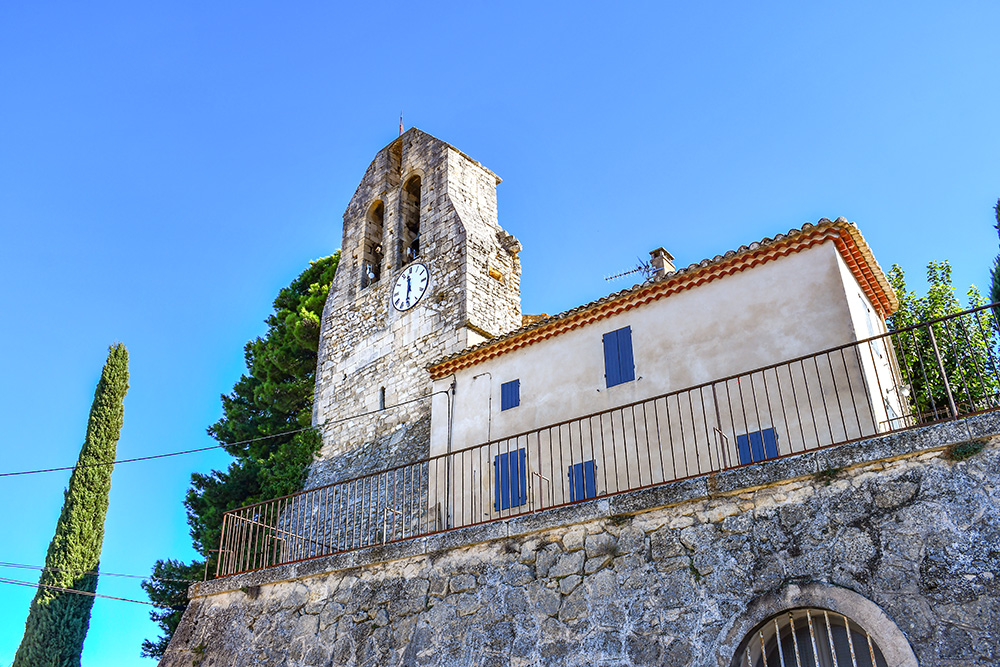
Robion Clock Tower © French Moments
The clock tower has two bells.
The bell on the left dates back to 1851, but the one on the right is much older.
It dates back to 1489 and is one of the oldest in the Vaucluse.
The current clock dates from 1743 and was made by Nicolas Mouchotte of Avignon.
Go back up to return to the old village.
Rue André Ricaud and Rue de la Calade
Let's take the Rue André Ricaud on the left.
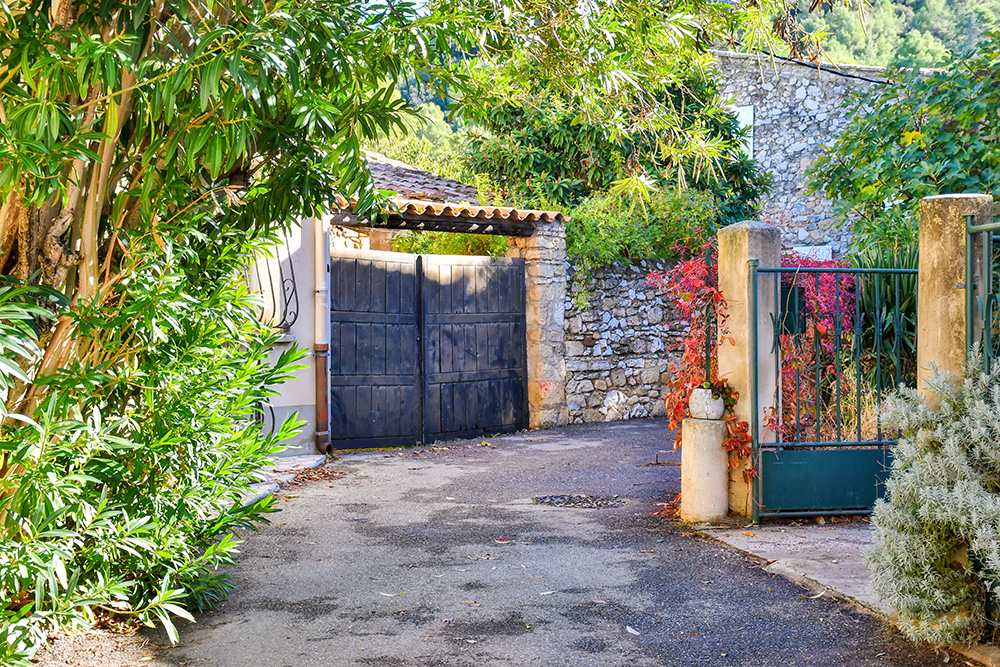
Rue André Ricaud © French Moments
After a short walk, turn right onto the Rue de la Calade, which is certainly the most picturesque street in Robion.
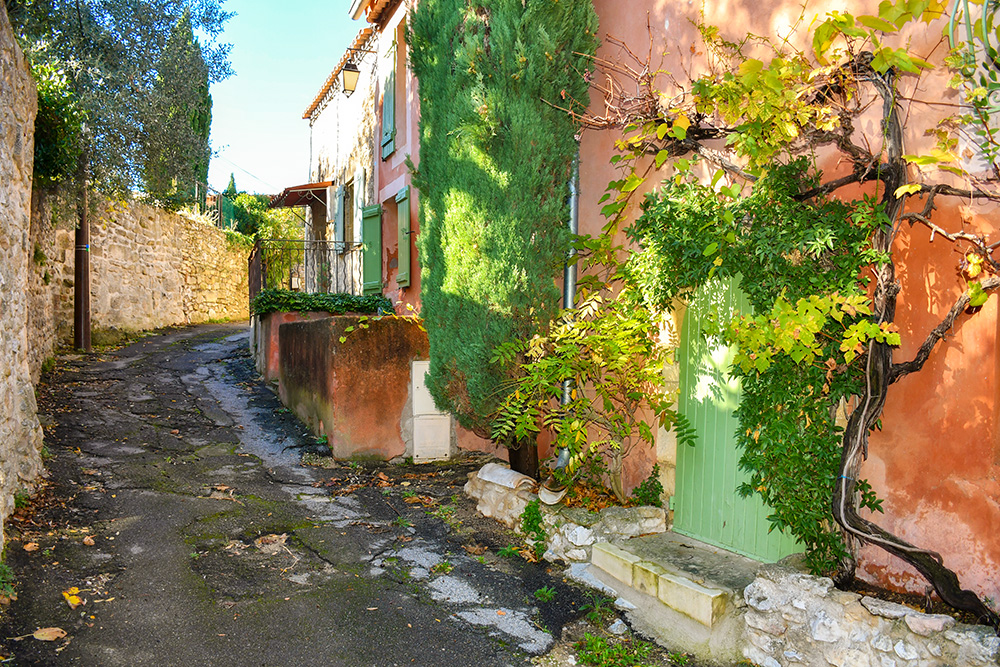
Rue de la Calade © French Moments
The castle once stood somewhere on the left.
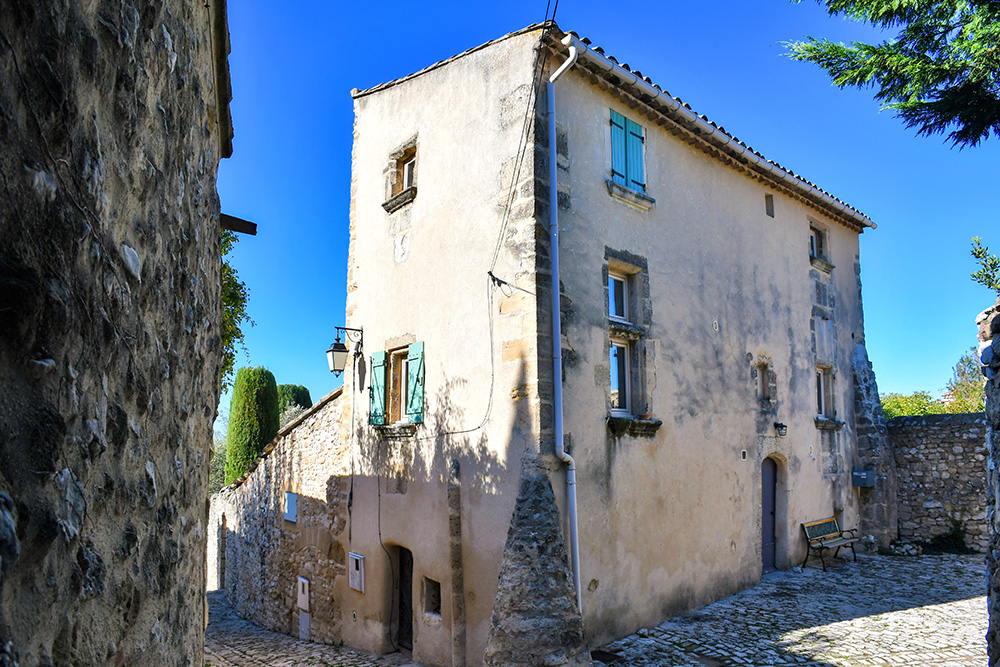
Rue de la Calade © French Moments
The Portalet
We arrive at the Portalet, the old fortified gate leading to the castle.
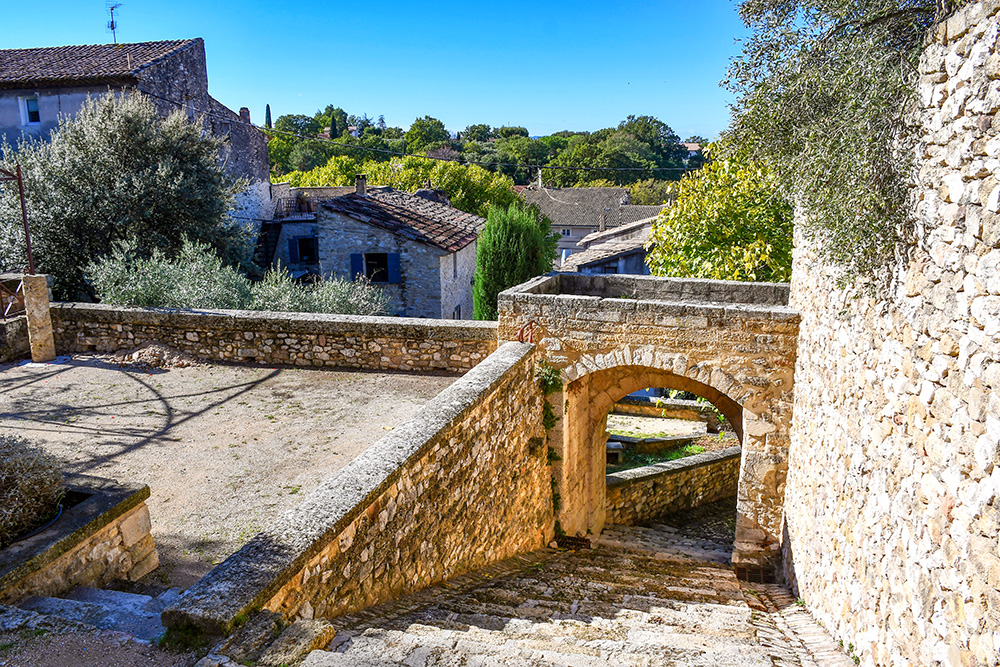
The Portalet © French Moments
Rue du Docteur Mounier
Before heading back to the church, let's take the Rue du Docteur Mounier which runs along the old rampart.
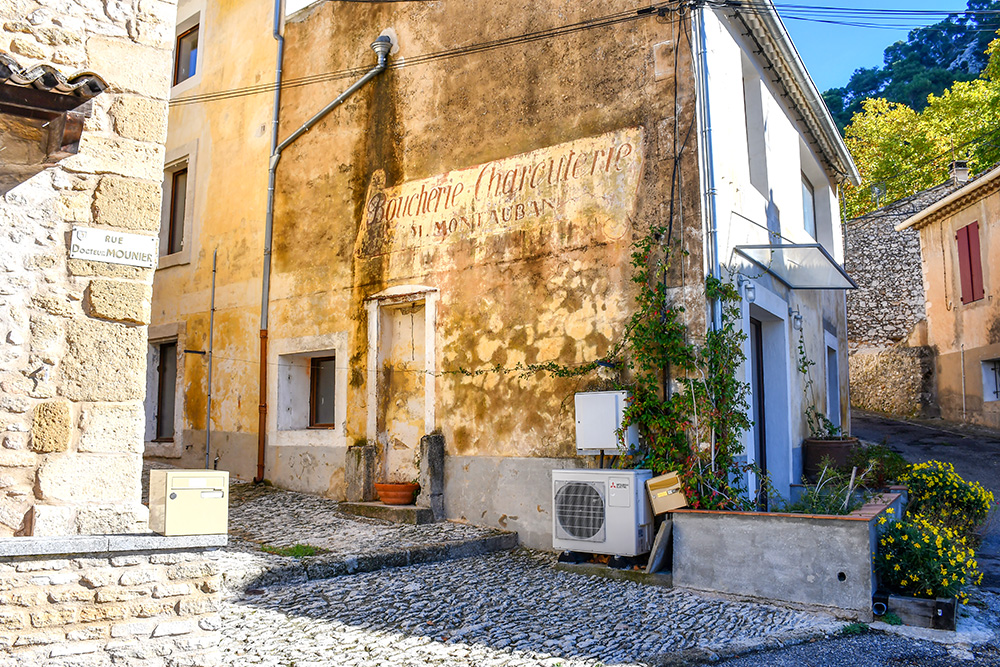
Rue du Docteur Mounier © French Moments
We have a beautiful view of the square, the fountain, and the war memorial.
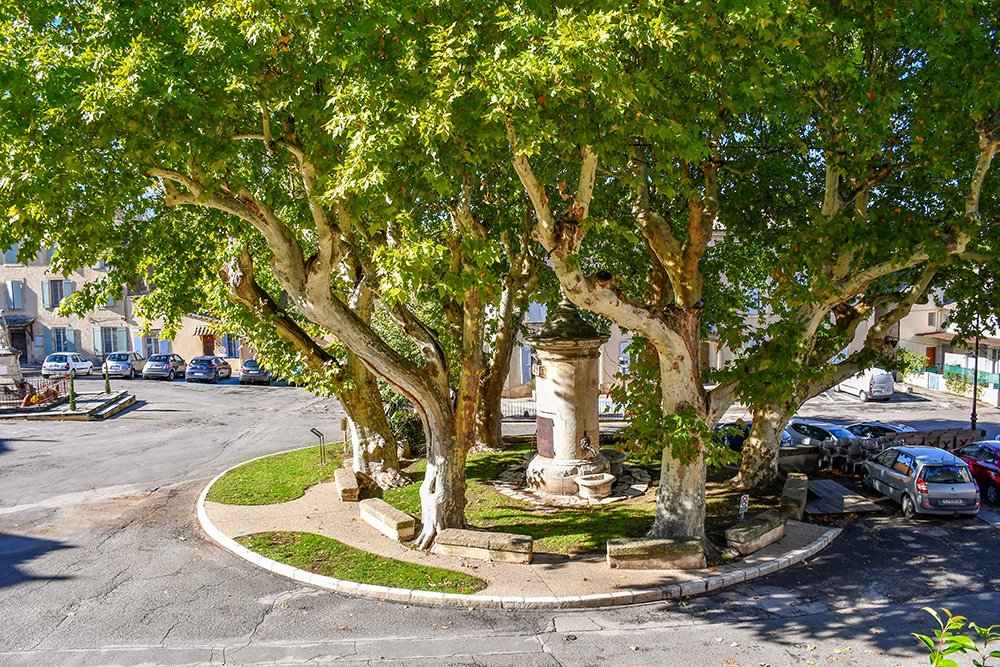
Place Clément Gros from Rue du Docteur Mounier © French Moments
The Church of Robion
From there, there is a fine view of the Church of Our Lady of the Nativity which was built, as you can see, outside the ramparts.
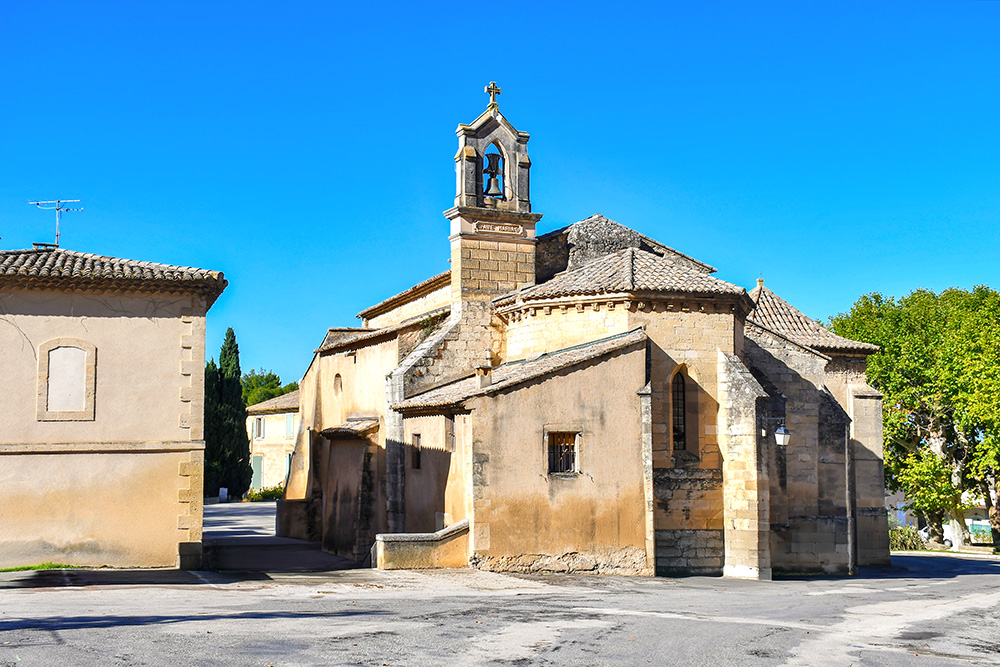
The apse of the church © French Moments
Its earliest mention dates back to 1261, but the construction is earlier than that, probably towards the end of the 12th century.
Because of its location outside the ramparts, it was damaged several times.
This led to the construction of a new church inside the ramparts.
All that remains of this church is the bell tower, which we saw earlier.
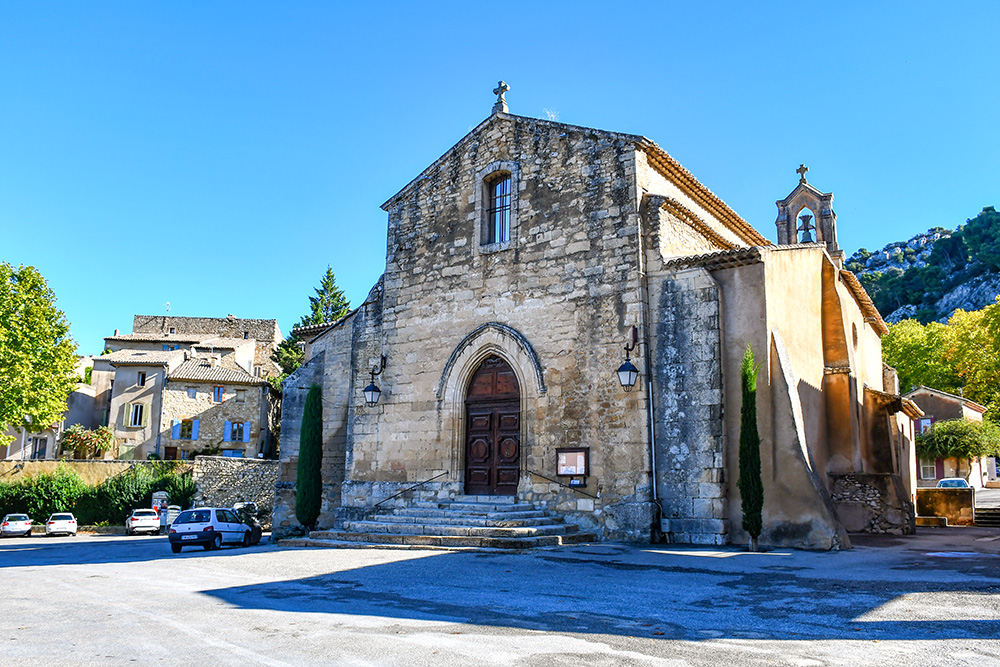
The west front of the Church © French Moments
Find out more
Here are some pages from our blog and other websites to find out more about this Provencal destination.
- Discover the hilltop villages of the Luberon
- Explore the neighbouring villages of Maubec and Taillades
- Find out more about Provence-Alpes-Côte d'Azur
- The official tourist office of the area
Where to stay near Robion
Robion and surroundings have a high capacity for holiday accommodation. The commune and its surroundings has hotels, bed and breakfasts (covering all price ranges), estate agencies offering seasonal rentals and gîtes.
Click here to book your accommodation in the Luberon or browse the map below:
What to do in the Luberon
Be inspired by a list of things to do in the Luberon:
Pin Robion on Pinterest





